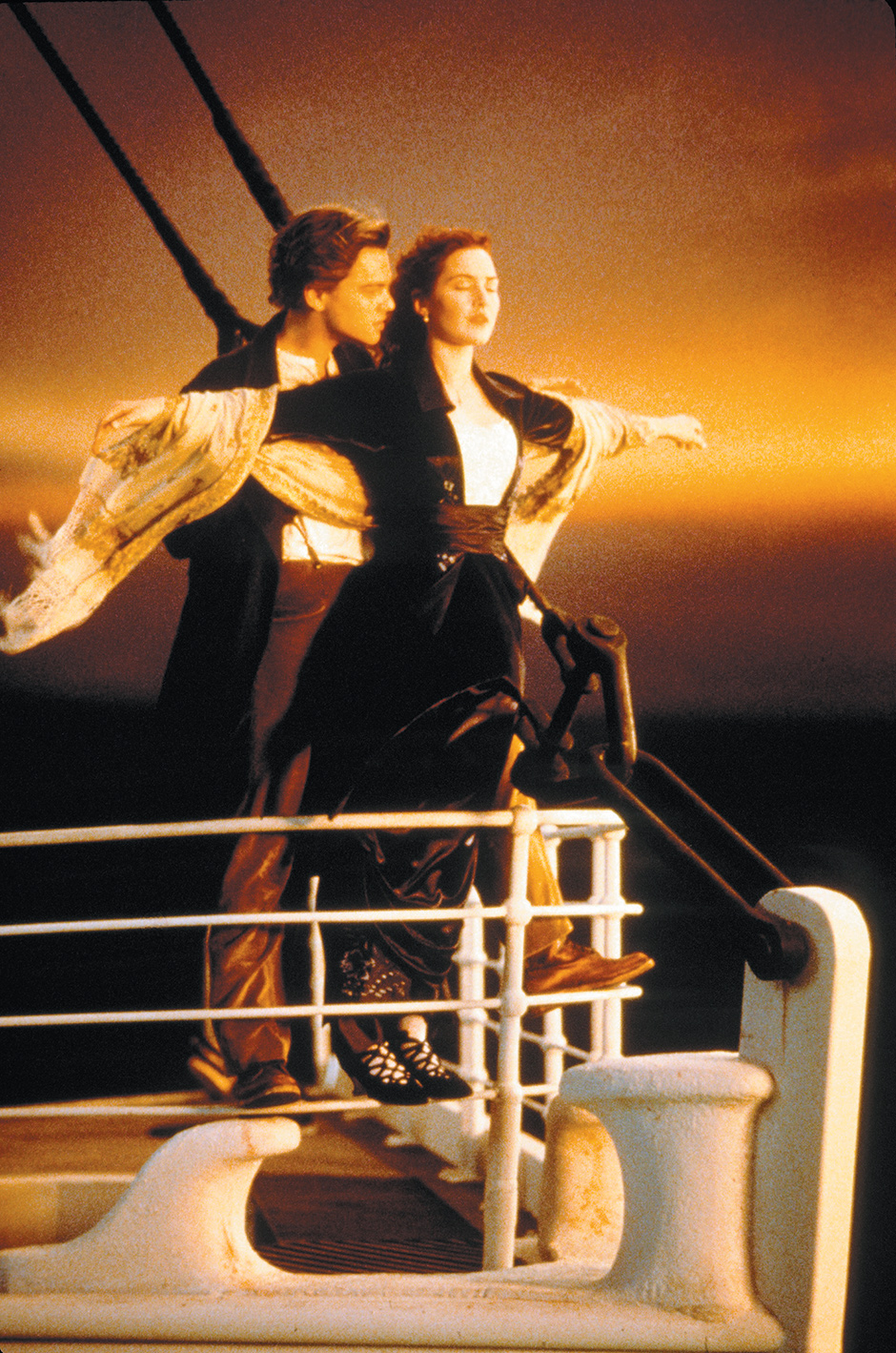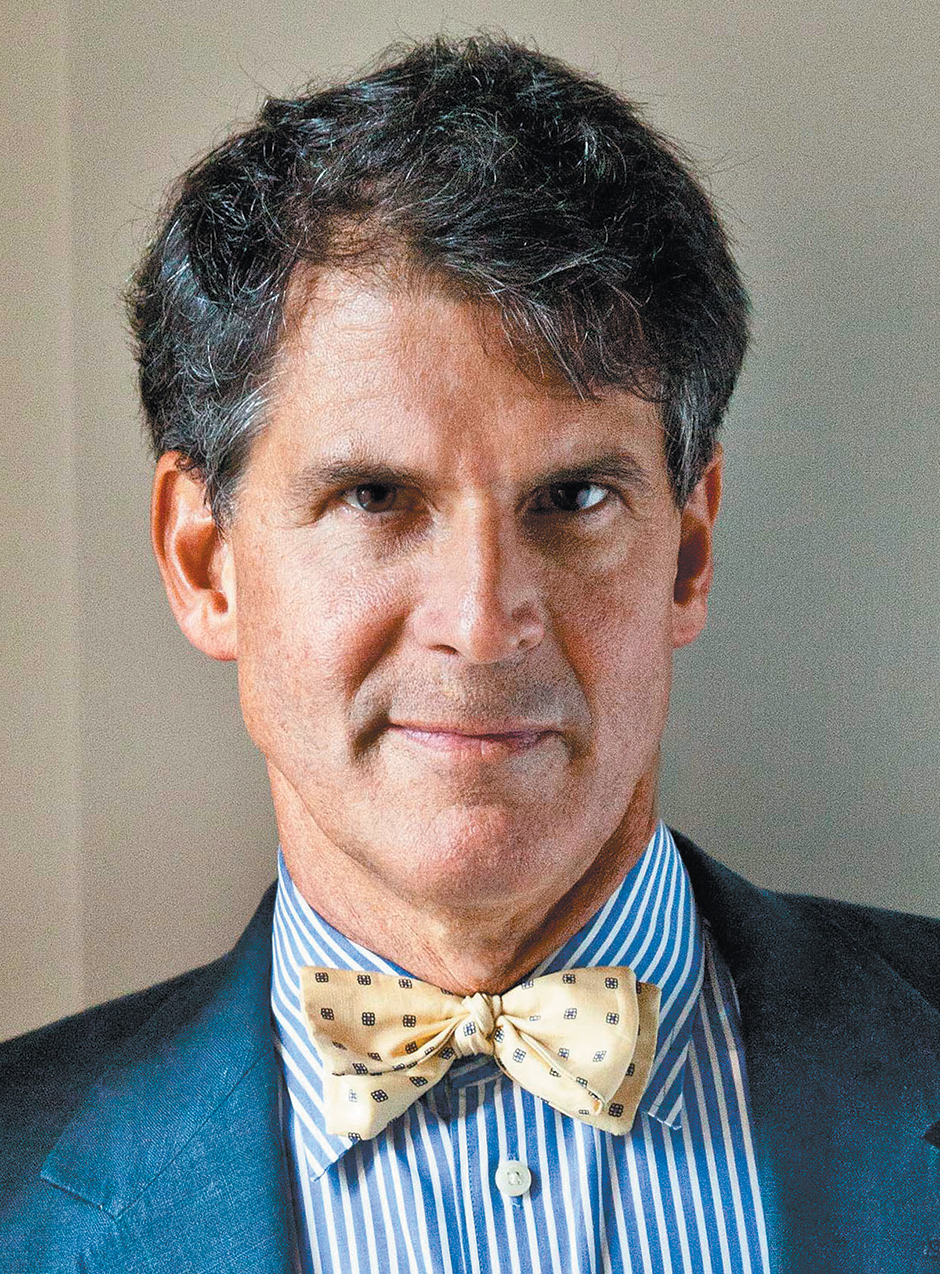The increasing focus of science today on the study of the brain has spilled over into considerations of what exactly may be happening to people who experience out-of-body and near-death experiences. In Erasing Death, a stimulating book published last year, Dr. Sam Parnia recapitulates recent arguments that there may well be a continuation of consciousness after what we conventionally think of as death. He’s one of a number of physicians and scientists who have been reconsidering the mainstream definition of death, concluding that it isn’t the single event of cardiac arrest but is a process. In other words, the heart stops but the brain doesn’t, so that visions, hallucinations, dreams—or NDEs—may take place after we’re officially labeled dead. In other words, these are in fact ADEs: actual death experiences.
Much of Dr. Parnia’s discussion rests on the extraordinary progress that has been made over the last twenty years in the art of resuscitation—and, as he emphasizes, of post-resuscitation. (He’s been a leader in this field.) The central procedure involved is the use of hypothermia—cooling the body to slow the heart. In a provocative sidelight, he invokes the Titanic. Rewatching James Cameron’s movie after a number of years, he concluded that if the people on the rescue ship Carpathia, which arrived on the scene less than two hours after the disaster, had been aware of the benefits of hypothermia, many of the 1,514 drowned victims found bobbing in the sea might have been brought back to life:
Today we would not have necessarily declared those people dead—at least not in the irreversible and irretrievable sense. Although I agree they were dead, they were nonetheless salvageable. Their bodies would have been largely preserved by the icy cold waters, and two hours is not much time at all. In short, they were potentially completely viable.
Erasing Death takes us through the histories of a number of patients not only “dead” for several minutes or hours but who have existed in years-long comas or other states of unconsciousness before suddenly reviving and even resuming a more or less normal life. (I have direct knowledge of one such case.) These people were not clinically dead, because their hearts were beating, but they were presumed to be brain-dead…until they weren’t. So what is happening to brains in this “dead” or unconscious condition? In what way can they and do they function? Do they retain some level of awareness? Are they dreaming? Are they having near-death experiences? We don’t know.
What adds to the confusion is that the vocabulary in which such things are discussed is (and no doubt has to be) vague: Parnia, among others, refers to consciousness, the self, the mind, the psyche, the soul, as if these things were almost interchangeable.
In his consideration of NDEs, Parnia sets forth a series of explanations that various reputable scientists have proposed in recent years: temporal lobe epilepsy; the effect on the dying brain of certain drugs; a change in the levels of carbon dioxide in those who are dying; a surge of electrical activity in the brain in the minutes preceding death; a lack of oxygen in the brain during the death process that may “cause uncontrolled activity in the brain areas responsible for vision,” thus triggering the illusion of experiencing a light and/or a tunnel—this is known as the “dying brain” hypothesis; and more. He summarizes these theories with apparent disinterestedness, but in his tempered dismissal of them I sense a certain satisfaction. What he’s hoping for, I infer, is a larger answer, or at least the answer to a larger question: Is it possible that what we call the mind may be “a separate, undiscovered scientific entity” that isn’t the result of the brain’s usual processes? This is a revolutionary proposition, and one that he seems to be straining to see confirmed.
What emerges, finally, from Parnia’s book is that it’s not simply the science that concerns him. His core issue is finding “a spiritual or metaphysical perspective on the survival of our consciousness beyond death.” He concludes:
Today, the tantalizing question for science is, If the human consciousness or soul does indeed continue to exist well past the traditional marker that defines death, does it really ever die as an entity? Our new studies will continue to explore this and other significant ethical questions. For now, though, we can be certain that we humans no longer need to fear death.
A comforting conclusion, but several readings of Parnia’s text have left me baffled about the evidence he’s marshaled and logic he’s employed to reach it.
Midway through his book, Dr. Parnia refers in passing to a 2006 study by Dr. Kevin Nelson on the possible relationship between NDEs and sleep patterns. Nelson isn’t mentioned elsewhere, even in the bibliography, which is hard to understand because two years before Erasing Death was published, Nelson published a carefully thought out and persuasive book called The Spiritual Doorway in the Brain. In it, he suggests what seems to me a possible, even plausible explanation of what may actually be happening to people who are experiencing NDEs. Nelson was inspired by something a woman reported decades earlier to Raymond Moody, author of the groundbreaking book Life After Life—a woman who after suffering cardiac arrest found herself fully conscious of the world around her but paralyzed and unable to signal to the doctors that she was alive. What natural physiological process, Nelson asked himself, could have caused her precipitous, total, yet temporary paralysis?
Advertisement
It came to him that there was a clear connection here to what we experience every night when sleeping—“when our eyes move rapidly beneath our lids, as if watching events before us. It is called the rapid eye movement stage of sleep, familiar to everyone who studies the brain. We call it the REM state of consciousness.” REM activity would explain the light beckoning to eternity that is one of the most salient features of most NDEs:
With death approaching, what if we were overtaken by REM paralysis, our visual system stimulated to produce light, and the dreaming apparatus in our brains triggered—all while we were consciously awake and in a state of medical crisis? REM consciousness and wakefulness blending into each other as death approached could explain many of the major features of near-death experiences.
The research that Nelson and his colleagues have been doing on this theory as well as on what he terms a variety of related spiritual events—“out-of-body experiences, feelings of rapture or nirvana, mystical ‘oneness,’ and visions of saints or the dead”—has, not surprisingly, stimulated controversy:
On one hand, the link I have made between REM and the near-death experience upsets those who see such experiences as a revelation of the afterlife or proof of an underlying web of consciousness or the existence of God. For these people, my work puts near-death experiences uncomfortably close to dreams—in other words, experiences that aren’t real. On the other hand, my work also irks some die-hard atheists, because it inextricably links spirituality with what it means to be human and makes it an integral part of all of us, whether our reasoning brain likes it or not.
He himself is searching for answers:
Are spontaneous and authentic spiritual experiences nothing more than “experiments of nature” telling us how the brain works?… Do these cold, hard clinical facts suck the divine nectar from our spiritual lives? My answer is an emphatic NO!
We are, he believes, “poised on the threshold of a new era that holds tremendous promise for a new level of spiritual exploration.” But his faith in spiritual experiences isn’t really explained. And his scrupulosity leads him to remark that “basing one’s spirituality on science is as foolhardy as basing one’s science on spirituality.”
Nelson’s ideas on near-death experiences make sense, at least to me, but, as with Parnia, I find it difficult to join him in his “optimistic” belief that “understanding the brain as a spiritual organ strengthens our quest for meaning and complements a mature spirituality.”
Unfortunately, these profound issues are being turned into battlefields in the culture wars. Dr. Eben Alexander, the author of the immensely successful Proof of Heaven, puts it this way:
Science—the science to which I’ve devoted so much of my life—doesn’t contradict what I learned up there [in heaven]. But far, far too many believe it does, because certain members of the scientific community, who are pledged to the materialist worldview, have insisted again and again that science and spirituality cannot coexist.1
“Certain members” is the language of the witch-hunt, and the mutual exclusivity of spirituality and materialism exists primarily in the eye of this particular beholder: as we have seen, men of science like Parnia and Nelson (and, among others, Freeman Dyson) are deeply interested in the spiritual, and seek to reconcile it with their purely scientific insights. What’s really happening here is that the words “materialism” and “spirituality” are being used by Alexander as code for “atheism” and “religion.”
By far the most contentious and rancorous of the books I’ve been considering is Life After Death: The Evidence, by the right-wing politico Dinesh D’Souza, who “remained lukewarm” in his religious beliefs until he became religiously engaged, leading to a new career as a Christian propagandist (What’s So Great About Christianity, What’s So Great About God), complementing his ongoing career as a disputatious patriot (What’s So Great About America, The Roots of Obama’s Rage, and his current big best seller, America: Imagine a World Without Her). Life After Death isn’t really about life after death—it’s a zealous assault on atheism. “I want to engage atheism and reductive materialism on their own terms, and to beat them at their own game.”
Advertisement
D’Souza goes about it by leading us through step-by-step “logical” arguments that might just convince naive school kids, his specious logic matched by his smug certainties and his conviction that he has proved his thesis:
We have repelled the atheist case against the believers…. By examining the arguments for and against life after death, we have concluded that there is strong intellectual and practical case for belief.
In other words, he agrees with himself. (Recently, this self-proclaimed patriot and Christian has not only been forced to resign his position as president of a small Christian college following an ugly sexual scandal that cost him his marriage, but has also pleaded guilty to charges of using straw donors to make illegal contributions to a United States Senate campaign, in violation of the federal campaign finance law, and to making false statements in this regard.)
D’Souza’s discussion of NDEs is as skewed as the rest of his book, directed not at understanding them or explaining them scientifically but at using them as another weapon against atheism:
While the critics of NDEs have raised some interesting possibilities—it might be this and it might be that—on balance, near death experiences do suggest that consciousness can and sometimes does survive death. By itself this is a very damaging conclusion for those who deny the afterlife.
Who those “critics” may be, I have no idea. People who do not accept NDE narratives as literal truth? The deployment of such straw men is typical of D’Souza’s methodology throughout.
As these various books suggest, then, two struggles are taking place simultaneously. One is the grappling of the neuroscientists with their new discoveries about the brain and about death—an endeavor that is clearly only in its early stages. The other is political and cultural, between skeptics and defenders of the faith. Because this latter struggle is so fierce, and because the discoveries of the neuroscientists are so challenging and even threatening, hyperbole, delusion, and anger dominate far too much of what should be disinterested discourse. After all, death and the possibility of an afterlife are matters that concern everyone and demand serious rather than overwrought consideration. Whom can we turn to for informed, rational reflection on the subject of NDEs?
One obvious choice is the sometimes controversial but always illuminating Oliver Sacks, himself a leading neuroscientist (and an admirer of Kevin Nelson’s The Spiritual Doorway in the Brain). In a recent article he considers the question of out-of-body experiences and religious epiphanies:
Both OBEs and NDEs, which occur in waking but often profoundly altered states of consciousness, cause hallucinations so vivid and compelling that those who experience them may deny the term hallucination, and insist on their reality. And the fact that there are marked similarities in individual descriptions is taken by some to indicate their objective “reality.” But the fundamental reason that hallucinations—whatever their cause or modality—seem so real is that they deploy the very same systems in the brain that actual perceptions do.2
NDEs tend to occur, he tells us, in some measure echoing Nelson, in the “transitional stages, where consciousness of a sort has returned, but not yet fully lucid consciousness.” As for Eben Alexander’s Proof of Heaven, “to deny the possibility of any natural explanation for an NDE, as Dr. Alexander does, is more than unscientific—it is antiscientific.” Sacks’s conclusion:
Hallucinations, whether revelatory or banal, are not of supernatural origin; they are part of the normal range of human consciousness and experience. This is not to say that they cannot play a part in the spiritual life, or have great meaning for an individual. Yet while it is understandable that one might attribute value, ground beliefs, or construct narratives from them, hallucinations cannot provide evidence for the existence of any metaphysical beings or places. They provide evidence only of the brain’s power to create them.
Assuming, then, that in some way those who have experienced NDEs have unconsciously created their own scripts, why these scripts? We’re told by Moody and others that people from Asia and elsewhere have recounted NDEs reflecting patterns of behavior and belief very different in detail from those we’ve come upon in recent American narratives; but none of the books I’ve read has provided any such foreign accounts. In fact, there’s an extraordinary sameness to our native NDEs—a unanimity of experience that has been proposed as confirmation of their genuineness: this vision of heaven corroborates this other vision of heaven, give or take the obvious differences in sophistication between, say, Colin Burpo and Eben Alexander.
It was not like this in earlier days. In Life After Life (1975) Raymond Moody went to great pains to tell us, “I am not trying to prove that there is life after death. Nor do I think a ‘proof’ of this is presently possible.” And he goes out of his way to insist that none of the experiences he’s been told of involve Jesus, God, or heaven—“Through all of my research…I have not heard a single reference to a heaven or a hell anything like the customary picture to which we are exposed in this society.” But somewhere along the way, his cautious approach to the near-death experience—even so, dismissed by some professionals as purely anecdotal and highly unscientific—has been transformed by the Christian narrative.
Or by that part of the Christian narrative that is basic to fundamentalist or evangelical believers—and more than 26 percent of Americans belong to an evangelical church. Almost all the writers of today’s NDE narratives have had a Christian upbringing, although a few came to religion later in life. They’re certainly all believers—if they weren’t, they would report surprise at finding themselves in heaven. (Or hell: several narrators stop by there too.) They have known of Jesus and God and heaven from their earliest days as children in Sunday school and weekly churchgoing, from their parents, from TV evangelism. The appurtenances, the images, the surroundings are deeply engrained.
So it should come as no surprise that for such people of powerfully held religious belief and lifelong acquaintanceship with Christian doctrine and chronicles, their dreams, or hallucinations, or visions—or NDEs—should take the form of visits to Christ in heaven. If people can believe that they’re possessed by the spirit of Christ in a church, and millions of evangelicals do believe they are, why should they not be equally convinced that their dreams are the reality? And since we’re dealing with faith here, there’s no point in arguing or denying, or calling on science to refute belief. After all, a large percentage of Americans don’t accept the idea of evolution.
The recent rash of books on NDEs and connected matters is further witness, if we require further witness, to the extraordinary power of the evangelical vision of life. It withstands science, it withstands the reality principle. A majority of Americans simply demand the reassurance of life after death, and many, many religious authorities—both before and after the heyday of Billy Graham, now ninety-five, who, with his mix of good sense and jingoistic motivational language, seems to me the most impressive of them all—have offered that reassurance. Besides, however much we skeptics may scoff, is there any real danger in Betty Eadie’s seeming “to melt with joy” as she was held in Christ’s arms and comforted? Perhaps rather than being derided or censured, she should be envied.
—This is the second of two articles.
-
1
See my discussion of Alexander’s book—and many other books about near-death experiences—in the first part of this article, The New York Review, October 23, 2014. ↩
-
2
“Seeing God in the Third Millenium,” The Atlantic, December 12, 2012. ↩





